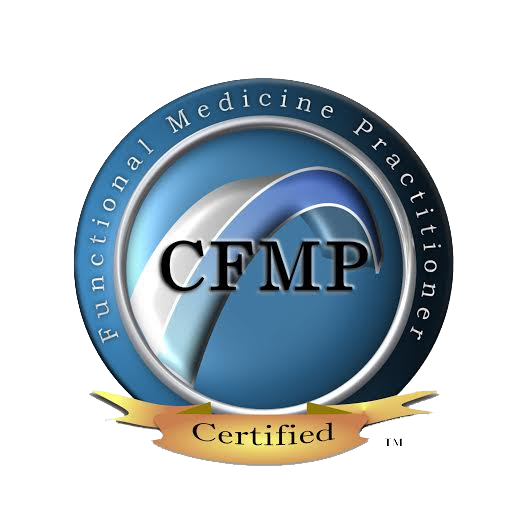
Patients are often shocked when I tell them that toxic mold may be the cause of their illness. It’s an unexpected revelation, especially in the dry southwest, where mold isn’t typically top of mind for most people. However, as I’ve seen firsthand in my practice, even small amounts of mold can lead to serious health problems for certain individuals. Mold doesn’t need to thrive in humid environments to be harmful—its effects can show up in even the driest of places. In this article, I’ll explain why some people are particularly vulnerable to mold exposure, and how even minimal exposure can trigger a range of health issues.
The Common Symptoms of Toxic Mold Illness are:
- General symptoms: fatigue and weakness
- Musculoskeletal: muscle aches, cramping (claw-like cramping in hands and feet), joint pain
- Respiratory: cough, shortness of breath, chronic sinus issues, asthma
- Eyes: redness, blurred vision, tearing, sensitivity to bright lights
- Gastrointestinal: abdominal pain or cramping, nausea, diarrhea
- Central nervous system: memory loss, difficulty with word finding, confusion, disorientation, difficulty concentrating, learning difficulties, mood swings
- Neurological: headache, numbness, tingling, lightheadedness, vertigo, metallic taste, temperature dysregulation, tremor
- Unusual symptoms: increased thirst, frequent urination, appetite swings, frequent electric shock [1. Shoemaker, R. C., & House, D. E. (2006). Sick building syndrome (SBS) and exposure to water-damaged buildings: Time series study, clinical trial and mechanisms. Neurotoxicology and Teratology, 28(5), 573-588. ]
What Should You Do If You Suspect Mold?
If a patient has symptoms in four of the eight categories, toxic mold illness needs to be considered. The other condition that has a similar set of symptoms is chronic lyme disease. These two conditions are connected, in that they make people sick from the toxins they produce, and the inability of the person to get rid of those toxins.
With toxic mold illness, the mold itself is not the problem. It’s the toxins the mold makes that makes a person sick. In chronic lyme disease, it’s not the bacteria itself that makes a person sick, it’s the toxins that the bacteria makes that make a person sick.
If that isn’t mysterious enough, most people who are exposed to toxic mold will not develop toxic mold illness. I’ve seen it many times. A building has toxic mold but only one person is sick. The reason is that most people can detoxify these toxins. Thankfully Ritchie Shoemaker, MD made it possible for us to identify the people who have the genetic weakness for these toxins.
Dr. Shoemaker called these kinds of illness, “Chronic Inflammatory Response Syndrome (CIRS).” Simply put, a person with the bad genetics can develop CIRS with any toxin they can’t detoxify. Lyme and toxic mold are the most common culprits of CIRS.
Common misdiagnoses of CIRS are:
- Fibromyalgia
- Chronic Fatigue Syndrome
- Multiple Sclerosis
- Depression
- Stress
- Allergies
- Irritable Bowel Syndrome
- ADD
- PTSD [2. Shoemaker, R.C. (2014, December). What is CIRS, lab testing and treatment protocol ]
Diagnosing Toxic Mold Illness
Most of the time, when I tell patients their illness is due to mold, they don’t realize they’ve been exposed to it in the buildings where they live, work, or go to school. This is why testing plays such a crucial role in diagnosing toxic mold illness—it often hides in plain sight, and people can easily overlook or misattribute the symptoms.
Testing for toxic mold consists of several elements:
- There are a number of blood tests that will show if the body is reacting to a biotoxin consistent with CIRS.
- Home Mold Test: the dust test uses PCR technology to detect hidden molds in your home and correlates them to the mycotoxins in your body.
- Mycotoxin testing will show whether a person has mold toxins in their body.
Removing Toxic Mold Illness
When mold toxins enter the body, they can wreak havoc on your immune system, nervous system, and overall health. If you’ve been exposed to mold, detoxifying your body is a crucial step in your recovery process. Mold toxins, particularly mycotoxins, are persistent and can accumulate over time, causing long-term health issues if left untreated.
Fortunately, there are several effective methods and supplements available to help remove these harmful toxins from your body.
Here are some of the Top Mold Toxin Detoxifiers:
- Binders (Activated Charcoal & Bentonite Clay)
Natural binders like activated charcoal and bentonite clay effectively absorb mold toxins and prevent them from re-entering the bloodstream. They bind to mycotoxins in the digestive system, allowing the body to safely excrete them. - Glutathione
Glutathione is one of the body’s most powerful antioxidants and detoxifiers. It plays a vital role in neutralizing and eliminating mold toxins, especially in the liver. Supplementing with glutathione can help boost your body’s natural detox pathways and support healing. - Chlorella
Chlorella is a green algae known for its ability to detoxify heavy metals and other toxins, including mold. It works by binding to toxins in the body and aiding in their elimination. Chlorella also supports the immune system, which is critical when dealing with mold exposure. - NAC (N-Acetyl Cysteine)
NAC is a powerful precursor to glutathione and helps replenish the body’s natural stores. By promoting the production of this vital antioxidant, NAC supports detoxification and helps repair cells damaged by mold toxins. - Sauna Therapy (Infrared Sauna)
Sweating is a natural detoxification process, and using an infrared sauna can help your body release mold toxins through sweat. The heat from the sauna increases circulation and helps to flush out toxins, promoting overall detoxification and healing.
Our office can help you detox from mold toxins. It is a process that requires patience, support, and the right tools. It’s crucial to work with a healthcare professional who understands mold toxicity and can guide you through the detoxification process safely and effectively. If you suspect mold exposure and want to start a mold toxin detox, don’t hesitate to reach out to our office. We specialize in mold-related health issues and can help create a personalized detox plan tailored to your needs.
Start Today!
If you’re interested in getting tested for mold exposure and starting a mold toxin detox, the first step is filling out our new patient form. Testing is the only way to determine if mold is the source of your symptoms, and working with a doctor who understands CIRS (Chronic Inflammatory Response Syndrome) is crucial for accurate diagnosis and effective treatment. Not all doctors are familiar with the right testing protocols, so it’s important to work with someone who specializes in this area.
We work with patients from all over the world, and we’re here to help you every step of the way. If you have any questions or need further information, please don’t hesitate to reach out. We’re happy to assist you!



